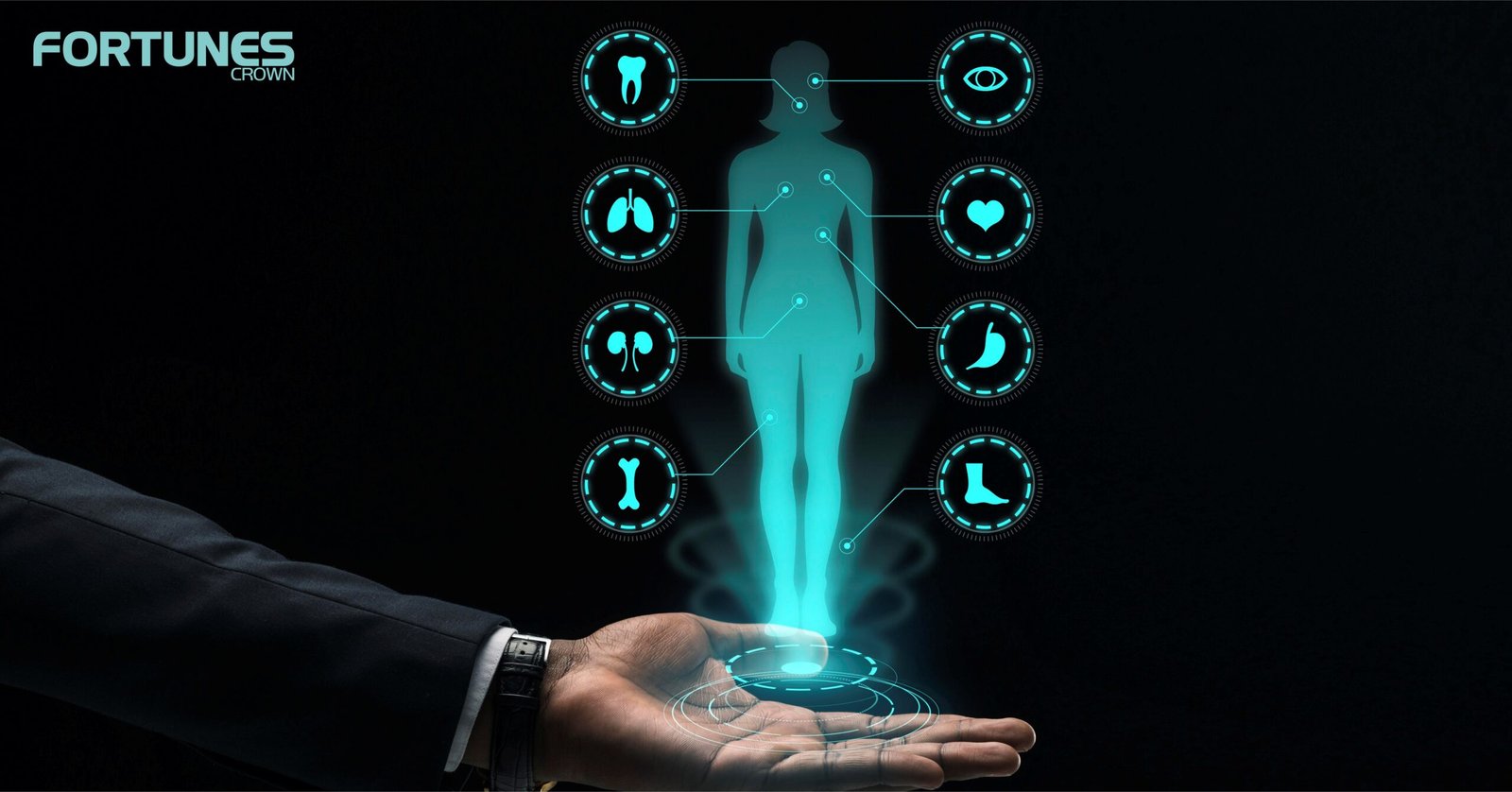Healthcare is one of the most critical industries and its development makes it possible to cure many diseases, health and technology coming together to cure diseases that are even rarer. Technological advances in the medical field have allowed a deeper understanding of diseases. Healthcare technology have revolutionised the world, and technology-based tools are integrated into every phase of healthcare quality and efficiency.
Technology plays a big role in providing better insights into the human body. However, progress cannot be made without considering other elements that pave the way for a better and healthier future. These include rising healthcare costs, increasing inequalities and climate change.
The presence of technology in medical applications creates new opportunities for patients and medical staff to live in a more sustainable environment and even fight previously incurable diseases. Technologies such as artificial intelligence (AI), machine learning, virtual assistance, the Internet of Medical Things or 5G are just a few examples that help creating and manage healthcare information system helps in assisting medical facilities and improving them.
Today’s healthcare industry stands tall as a $2 trillion giant at a crossroads, combining to domain health and technology. The industry needs help with overwhelming costs and bureaucracy and is looking for ways to improve in almost every possible area.
Let us see how health and technology come together to serve humans. These are the five latest healthcare technology that has revolutionised the healthcare industry.
Healthcare Technology for Surgery
Surgery has seen some of the greatest increases in efficiency and advances in medical technology over the years. Robots assist in various surgeries, from minor non-invasive procedures to open-heart surgery. These robotic surgical assistants come in all shapes and sizes, from a tiny robot that crawls across the surface of the heart to a giant arm that serves as an extra pair of hands during procedures.
Robots aren’t the only technology attacking the operating room. Virtual and augmented reality help doctors and surgeons to look into the healthcare information system and to perform better in various important tasks such as practising new surgical techniques or explaining procedures to patients in detail.
Artificial Intelligence (AI) in healthcare
Artificial intelligence is evolving in many fields, including healthcare. Artificial intelligence is one of the most important healthcare technology, with diverse applications such as examining patient information and other data using healthcare information system, and the possibility of developing new medicines and improving the efficiency of diagnostic procedures.
Machine learning, a type of artificial intelligence, is having a huge impact on the healthcare industry. For example, this technology has enabled the analysis of CT scans to treat the effects of the coronavirus. However, there are many other uses of AI beyond pandemic management such as keeping all the information in the healthcare information system.
Artificial intelligence improves cancer diagnosis. For example, a biopsy was the primary means of diagnosing cancer for decades, but this did not provide a complete picture of the organ’s tissues. Today, digital scans of a specific region potentially affected by cell mutations are a fundamental part of modern histopathological techniques. Pathologists can use Whole Slides or Whole Slide Imaging (WSI) to image much larger parts of the human body at once.
Another example is Microsoft, which has developed a brilliant artificial intelligence technology called Project InnerEye. The project shows how artificial intelligence can improve doctors’ ability to arrange radiation therapy 13 times faster.
These examples show how health and technology can benefit human health.
Integrating data and Predictive analysis
Combined with artificial intelligence and other technologies, data integration and predictive analytics help you gain meaningful insights into the condition of your patients. Thanks to artificial intelligence devices like robots that enable data integration and predictive analytics, healthcare workers can gain insight into a patient’s medical records, make a more accurate diagnosis, and decide what treatment is right for them.
Robots collect data and log into the healthcare information system and predict, sometimes before the doctors what the patient needs. However, there are concerns about the presence of robots, such as whether they can really replace humans in their work. Such visions are already common in science fiction films; For example, the “Baymax” robot known from Big Hero 6 can measure a patient’s pain intensity, inform and intervene when a patient is in danger and indicate what medication is needed, if these fictions come to reality The healthcare technology would be boon for human beings.
Nevertheless, the reality is different from movies. AI might not replace doctors but rather help them receive suggested diagnoses, drugs, and treatment plans based on a patient’s specific medical records, history, and present symptoms analysed in the healthcare information system. Healthcare staff will be able to use the results of this thorough and thorough analysis of healthcare data to improve patient outcomes, lower costs, and increase staff job satisfaction.
Technology in mental health
According to the World Health Organization, mental health problems are increasing worldwide. In the last ten years, there has been a 13% increase in mental illnesses and addictions, mainly due to demographic change. Today, 1 in 5 people suffer from a disability due to mental health problems. The recent impact is mainly due to social media usage and the COVID-19 pandemic.
Over the past year, several new healthcare technologies have been developed to help meet a patient’s ongoing mental health needs. Since a lot has shifted to the Internet, many psychologists and psychotherapists provide help via video messenger. There are also digital therapies (DTx) and some applications are able to complete patient enrollment and offer an initial diagnosis. Doctors are therefore trying to find solutions that help as many people as possible.
Remote patient monitoring & virtual care
The Internet of Things (IoT) refers to the public network of interconnected devices and the technology that enables the communication between devices and clouds. Often referred to as the medical Internet of Things, the medical industry includes advanced healthcare technology such as wearable sensors, 5G-enabled devices and remote patient monitoring. Some of these devices can be bought from Moxa.
One outcome of the IoT is a smart pill that provides healthcare professionals and physicians with information from inside patients’ bodies, known as the Internet of Bodies. According to Gartner, smart pills are swallowable sensors that can record various physiological measurements. They can also be used to measure the effect of a medication and to check that the patient has taken it as prescribed. The first FDA-approved smart pill was launched in 2017. This can be done by logging patients’ medical records in the healthcare information system.
Other healthcare information system features include security, location services, teleconferencing, meeting management, secure messaging, vendor ratings, visit history, and portable connectivity. In addition, primary care facilities and clinics can now act as remote hospitals, for example, to perform simple ultrasound scans on pregnant women and share data for remote virtual collaboration.








